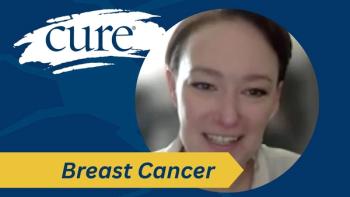
- Fall 2013
- Volume 12
- Issue 3
Committee Reports on Breast Cancer and the Environment
Breast cancer and environment committee releases releases report and recommendations.
Earlier this year, the Interagency Breast Cancer and Environmental Research Coordinating Committee (IBCERCC), formed in 2008 when Congress passed the Breast Cancer and Environmental Research Act, issued its report, “Breast Cancer and the Environment: Prioritizing Prevention.”
The committee’s goal was “to recommend research that will provide the evidence to inform, enable and promote breast cancer research, including intervention programs across the cancer control continuum—from prevention through detection, diagnosis, treatment and survivorship—to reduce the burden of breast cancer.”
For the report, released in February, the committee defined environment as:
>
Lifestyle and behavioral factors, such as alcohol intake and physical activity;
>
Chemical agents, such as pesticides, industrial pollutants, consumer products and medications;
>
Physical agents, such as radiation from medical and other environmental sources; and
>
Social and cultural influences, such as family, community, psychosocial and societal factors.
The committee provided seven recommendations in the report, including formation of a “national breast cancer prevention strategy to prioritize and increase federal government investments in breast cancer prevention.”
The committee is charged with reviewing federal research efforts concerning the environmental and genomic factors related to breast cancer, identifying scientific advances in breast cancer research and outlining key research questions, methodologies and knowledge gaps. The group is now working to expand awareness of the report and its findings, says Michele Forman, chairwoman of the committee and a professor in the department of nutritional sciences at the University of Texas in Austin.
Janet Gray, director of the Vassar College Environmental Risk and Breast Cancer Project in Poughkeepsie, N.Y., says that if researchers could continue to work together to identify specific factors in the environment, steps could be taken to remove them or help people avoid them.
Gray is not a member of the committee, but is a board member of the Breast Cancer Fund, a nonprofit group dedicated to exposing and eliminating the environmental causes of breast cancer.
Despite progress in treating and understanding breast cancer, an estimated 39,600 women in the U.S. are expected to die from the disease this year. The majority of women who develop breast cancer have no family history of the disease and no discernible cause.
While the number of women who die from breast cancer continues to decline by about 2 percent annually, the number of women who receive a breast cancer diagnosis has remained unchanged, with an estimated 232,300 new cases of invasive breast cancer expected this year. According to the report, the annual cost of breast cancer to the nation in 2010 alone was about $17.4 billion.
“Most importantly, scientific evidence is beginning to accumulate that indicates that many common environmental chemicals may not only affect a women’s risk for breast cancer, but also that of her daughters,” Gray says. “We owe it to our children and grandchildren to keep the research going and to take a preventive approach to applying this science.” Formal scientific proof of chemicals causing breast cancer, however, has been elusive.
The IBCERCC also recommended pursuing an approach to research that would engage scientists from across disciplines, as well as intensifying the study of chemical and physical factors that potentially influence the risk of developing—and likelihood of surviving—breast cancer.
The remaining recommendations from the IBCERCC call for planning strategically across federal agencies, training researchers across the career trajectory, engaging stakeholders who represent the public and affected communities and translating and communicating science to society.
“Prevention is the key to reducing the burden of breast cancer,” Forman says.
Articles in this issue
about 12 years ago
Lung Cancer Video Touches on Emotions and Supportabout 12 years ago
Triple-Negative Breast Cancer: Divide and Conquerabout 12 years ago
Future Frontier: Fighting Cancer at the Genetic Levelabout 12 years ago
Second Chance: When Grandparents Become the Caregiversabout 12 years ago
Supreme Court Votes Against Human Gene Patentsabout 12 years ago
Documentary About Cancer Plannedabout 12 years ago
Critical Mass Annual Conferenceabout 12 years ago
Superfoods Study Keeps More Men on Active Surveillanceabout 12 years ago
HPV Infections Plummet with Vaccine



